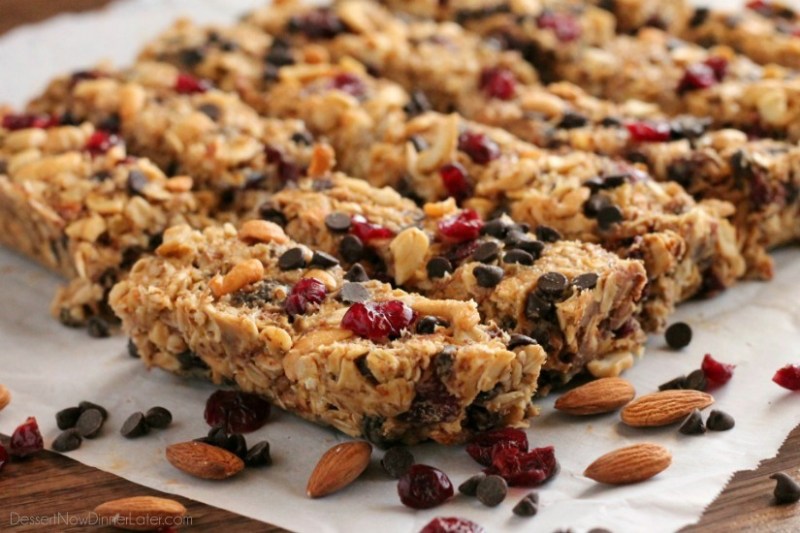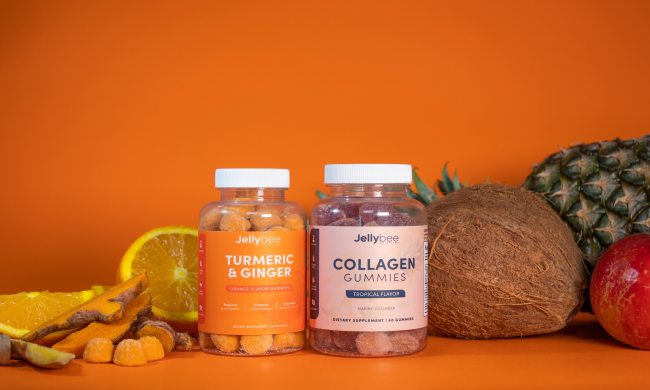Grocery store shelves are packed with breakfast bars, energy boosters, and all types of bite-sized health snacks. They all claim to offer a nutritional boost, but the bars you’re buying may not be beneficial for your body. Sometimes, a supposedly revivifying bite might be no better than a candy bar.
With hundreds of products to choose from, it can be difficult to know which products pack protein and fiber and which are just adding fat, sugar, and empty calories. When it comes to selecting the healthiest snack bars for your body, follow these guidelines from The Manual.

Find Your Target
You can accomplish the first step to choosing a snack bar before even entering a store. Why are you supplementing your diet with a snack? Are you supplementing meals? Searching for energy between eats? Promoting a more healthy diet? These considerations are important because you need to determine what will serve as a solution. Many bars pump up protein grams, which can serve both as brain power and muscle fuel. Others added antioxidants to elevate immunity. And some makers supplement these snacks with fiber for digestion.
Once you determine your reason for consumption, now is the time to determine how much of each nutrient to look for.
Protein and Fat for a Full Belly
Whether it’s for a long hike or a long day at the desk, if you’re eating snack bars as a meal replacement, you need to identify products with plenty of protein and fat per bar.
Protein and fat will help keep bodies energized over longer periods of time. Fat gets a bad rap. Protein takes longer than carbohydrates to digest, but fat takes the longest. If you’re looking to substitute a meal with a snack, fat is important, serving as the most natural appetite regulator. Fat keeps bellies full, preventing hangry cravings and mood swings.
This is why an apple by itself, which is mostly complex sugars, only keeps you full for about an hour, but an apple with peanut butter (protein and fat) could keep you full for two to three hours. Look for bars with nuts or seeds that provide natural fats as the main ingredients to sub-in snack bars for meals.
Protein Smarts for the Muscles and the Mind
Be careful about your “power” and “performance-enhancing” bars when supplementing meals or eating for better physical feats. Significant amounts of protein are great, but the body can only digest so much. Any bar featuring greater than 20 grams per bar is likely to simply be eliminated and not ingested if consumed all in one sitting.
If you’re eating a snack bar to replace a meal, 10 grams of protein is more than adequate. If you’re promoting heavy lifting or feeding strained brains, all the bar really needs is 5 to 10 grams of protein. More always seems to be better, but not if your body can’t use it. Don’t waste the extra money on super boosters.
Related Guides
Avoid Added Sugars
“Energy” bars are a red flag. So are low- and reduced-fat snack foods, as they are more likely to be loaded with sneaky sugars and processed ingredients. Sugars spike blood-sugar levels without maintaining them, which can lead to a sleepy, suffering crash. Try to choose bars with no more than 2 to 4 grams of sugar. And watch out for extras like cane juice, molasses, and honey. In small amounts, these sweet accessories can do wonders for food taste. Too much, though, and your body is at risk for increased inflammation, adding heart disease, diabetes, and arthritis risk factors.
Sugar alcohols like sorbitol, xylitol, isomalt, and mannitol are another common substitution in energy bars because they contain less calories than sugar. Less calories can help weight loss, but it can also cause cramping, bloating, and diarrhea. Sugar alcohols are difficult to digest, especially if you don’t consume them often.
Look at the Ingredients
This step goes under the “duh” label, but companies put a lot of money into creating enticing labels and packaging. No matter how good something looks, it’s important to remember to read the ingredient list. You aren’t just checking how many grams of protein, fat, and carbohydrates are in your snack bar. You want to establish that it’s made from natural ingredients and is free of hidden levels of fat and sugar. Preservatives and genetically-modified additives may increase shelf-life and reduce costs, but they can also be tougher on the gut to digest.
Watch for Whole Foods and Fiber
Last on the list, but maybe the most simple direction: look for bars that contain whole foods. Organic meats, fruits, vegetables, and nuts. That’s all your body needs. Not only do whole foods provide necessary nutrients but they contain the 2 to 3 grams of dietary fiber necessary for gastrointestinal health.
Carry that advice with caution, of course. High-fiber bars might hurt. The reason the woody material helps your gut is because the body can’t break it down and forces it out — along with the rest of the waste that is in there. Too much, however, and you’re asking for a stomach ache and/or a bloated abdomen, which is no fun for anyone.




